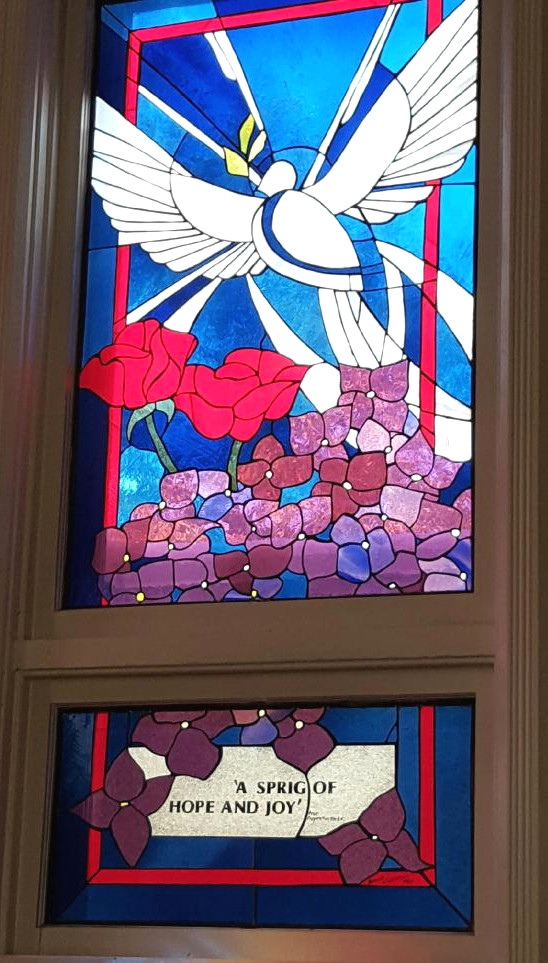Category: Partner Organizations
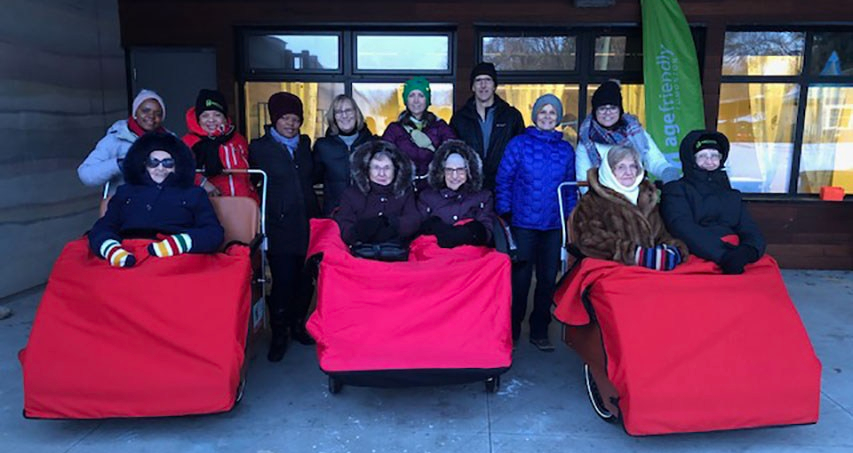
On Sunday, December 1, some of our GEF Seniors Housing residents took in the beautiful sights of Zoominescence at the Edmonton Valley Zoo through a different lens – on a Trishaw bicycle.
Zoominescence is a spectacular exhibition of artistic light installations within the Zoo grounds, and GEF partnered with Age-Friendly Edmonton to bring in our own Trishaw, a specialized three-wheel bike piloted by a trained volunteer, that gives older adults the experience of “wind in their hair” without having to drive a bike themselves.
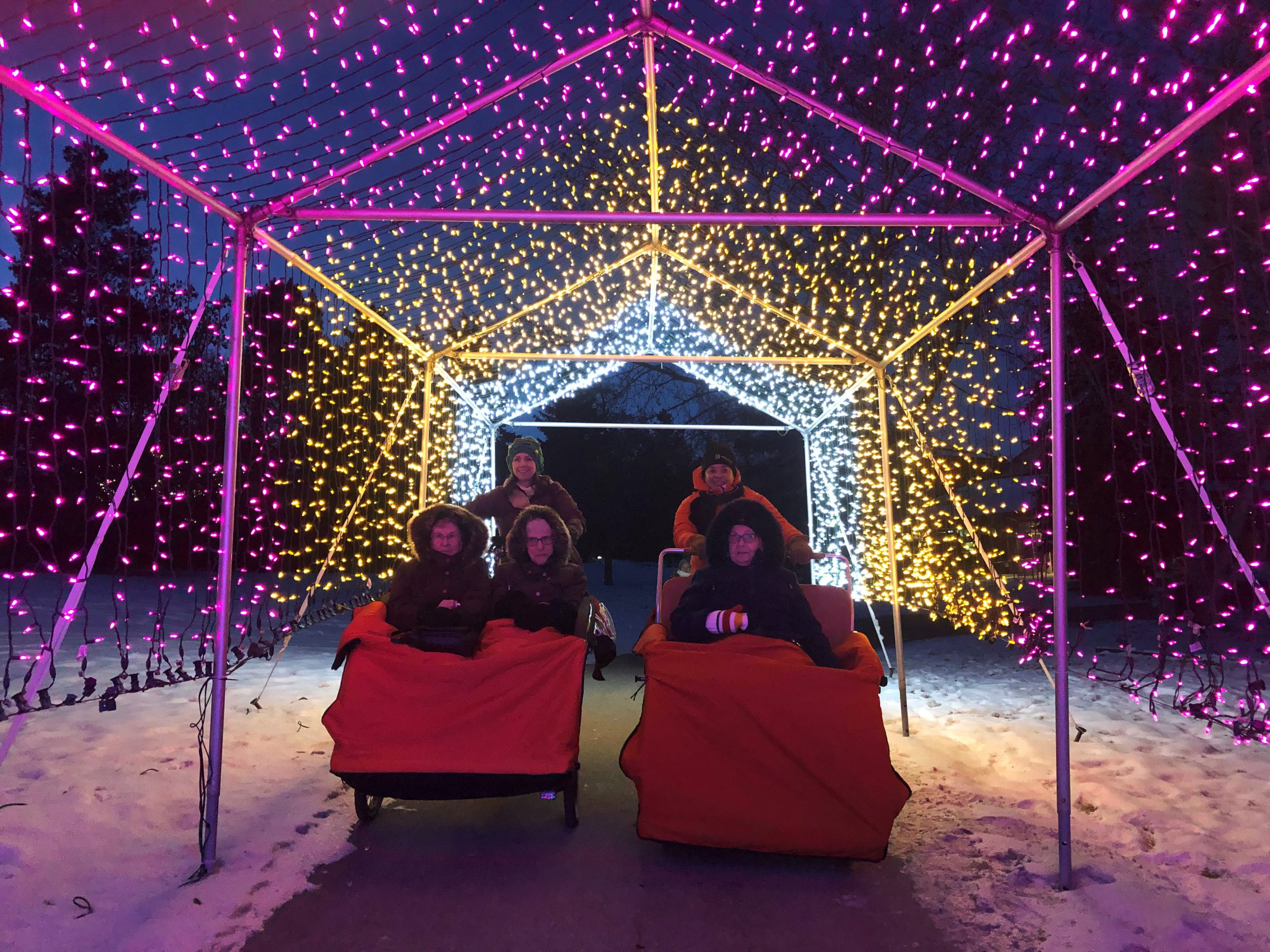
Cycling Without Age Beaumont brought in two additional trishaws and volunteer pilots and made sure all three trishaws were mechanically ready for winter, including installing studded tires.
One attendee, who was chauffeured to the event by our community partners at Drive Happiness, said when she arrived at the zoo that she wasn’t sure what she had signed up for. At the end of the tour, she shared that she had a marvelous time. She hadn’t been back to the Edmonton Valley Zoo since her children were young and told the organizers she was so glad she came out.
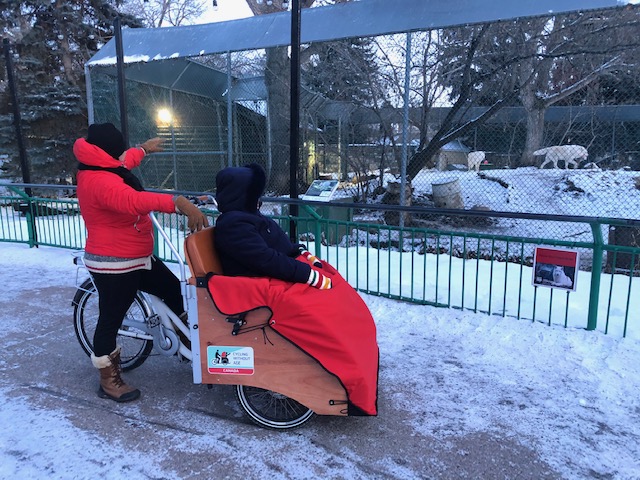
“I’m very grateful that GEF Seniors Housing and its staff support the Cycling Without Age Edmonton program and promoted this opportunity to enrich seniors’ lives,” said GEF Board Vice-Chair Jacquie Eales, who also took the beautiful photos featured in this article.

Are you – or do you know – a senior who would love to take a ride in a Trishaw during Zoominescence 2019? Trishaw rides are only being offered between 4-5 p.m. on December 15 and 22. Spots are very limited, and you can email Jacquie Eales to reserve your ride time at jeales@telus.net.
For more information on Zoominescence itself, including tickets, visit the Eventbrite page. Ticket prices range from $6 – $30. Zoominescence 2019 runs every Friday, Saturday, and Sunday evening in December, from 5-9 p.m., until Sunday, December 29, 2019.

November is Housing Month, a reminder of how important an issue housing is for everyone and how many challenges a lot of people face when trying to find somewhere affordable and accessible to call home. Young adults, families, and seniors are all affected by the rising housing costs in Edmonton. Governments at all levels have realized that housing is a growing issue for many people and are committing new funds and programs to help address these issues. Despite the growing efforts, many people still struggle with simple necessities that so many take for granted.
“If you spend more than 30 percent of your gross monthly income on housing, you’re considered below the poverty line,” says GEF Seniors Housing CEO Raymond Swonek. GEF Seniors Housing is just one organization participating in Housing Month efforts and activities to promote the need for more affordable housing in Edmonton.
“For many Edmontonians, spending only 30 percent of their income on housing seems like an impossible dream. We serve low-income seniors and offer them affordable housing options. We know the need in Edmonton is great, so we take part in Housing Month to help make sure no one ever has to worry about where they will call home.”
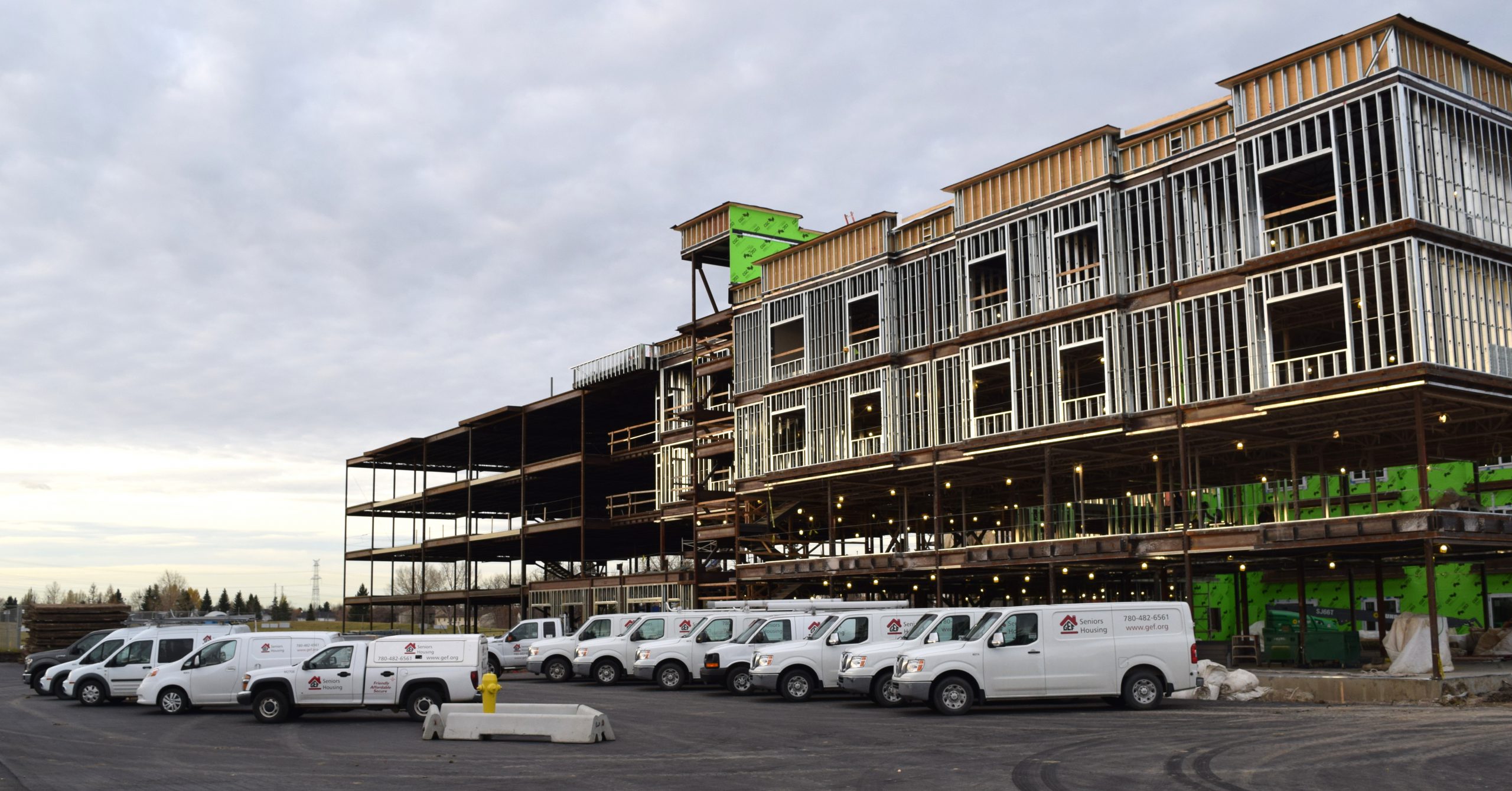
Housing Month started in Toronto with National Housing Day back in 1998. The City of Toronto called out to other municipalities to join them in recognizing the need for affordable housing options in their cities. The City of Edmonton decided to expand on the idea of National Housing Day into a whole month of events, promotions, and publications to educate and inform what affordable and social housing is, how affordable and social housing programs benefit neighbourhoods, and how individuals and communities can help housing organizations serve the people who need the help most.
GEF Seniors Housing is working with the City of Edmonton and other housing organizations such as Homeward Trust, Capital Region Interfaith Housing Initiative, and Capital Region Housing Corporation on a campaign to spur discussions around affordable housing in Edmonton, how to bring more affordable housing to different Edmonton communities, and what steps should be taken to help see more affordable housing projects break ground. Housing Month’s campaign also includes the National Housing Day Luncheon, hosted by Homeward Trust, on Wednesday, November 22, 2017, at the Coast Edmonton Plaza Hotel.
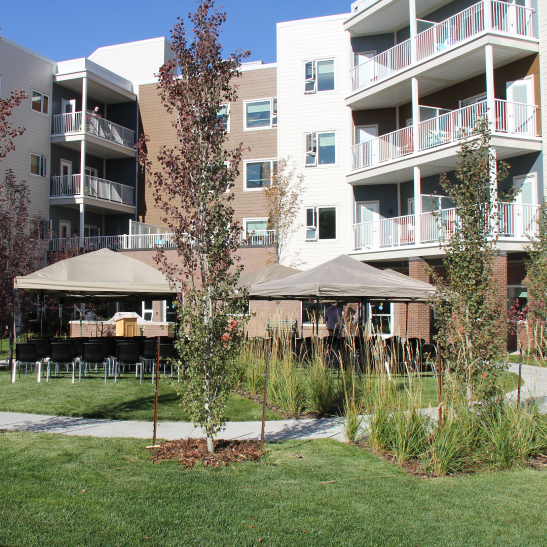
“The partnerships we have with the other housing organizations for Housing Month is part of what makes this campaign so strong,” says Swonek. “Every one of these groups does amazing work in this city and is committed to seeing more affordable housing options available to Edmontonians who are in need. I’m so proud to be part of a city and a community that takes housing so seriously.”
Housing Month seeks to highlight current affordable housing projects being built around Edmonton, showcase current affordable housing buildings already established in the city, and exhibit much of the progress made from the support of all levels of government. Though Housing Month is driven by the City of Edmonton, the Provincial Government, and the Federal Government both have worked on major housing strategies that have benefited Edmonton greatly and even started releasing funds already so that housing organizations can begin work on creating new homes.
“I’m optimistic about the future of housing when I see how much all these different organizations and different governmental bodies are all collaborating with this common goal,” says Swonek. “Housing Month displays so much of the progress we’ve made over the years. I’m excited for more communities to become invested in affordable housing and Housing Month is the perfect way to make those connections and build that support.”
A new bench was placed outside of Cathedral Close on June 29, 2017, and while this isn’t normally something to pay special attention to, this bench represents something more than simply somewhere to stop for a quick rest. As part of the City of Edmonton’s Hello, How Are You? campaign to address urban isolation and mental health, the Buddy Benches were developed by the City Lab as an open invitation to make a connection.
Edmonton Transportation Service (ETS) donated 20 brand new benches to be used as Buddy Benches all over Edmonton as a means to try and address social isolation. The idea is that people can stop and sit on the bench as a signal that they’re looking for someone to talk to. Anyone else can then join the person on the bench, ask how they are, and start a conversation. Most Buddy Benches are painted bright colours with the hashtag #SayHelloYeg to signal that this bench is meant for connections.

“When the bench was being installed, a lot of the tenants were asking what it was about, and after I explained the Buddy Bench program they loved the idea,” says Colleen Simpson, Assistant Manager with Cathedral Close. “We have a couple of our benches and a gazebo on our property, but the Buddy Bench is allowing more connection with the community, which is important for a lot of people.”
Areas being targeted for Buddy Benches include high-density neighbourhoods with lots of pedestrian traffic and close to seniors’ residential buildings. Seniors are increasingly a population at risk for social isolation and more organizations are taking steps to try and address the isolation issues and help prevent any of the adverse health effects that follow social isolation.
“In the short time the Buddy Bench has been in front of Cathedral Close, I’ve already seen a few seniors sit on it, and these are seniors I don’t recognize,” says Simpson. “People from the community are already trying to make more connections and I’m excited to see some of the interactions happen.”

Jim Murland came back to Edmonton in 1948 after serving in the Second World War and he found his first home in the McKernan neighbourhood in the city’s southeast. After he settled in his new home, one of the first jobs he had was adding stucco to the outer brick wall of Knox Metropolitan United Church in the Garneau neighbourhood. Now at 98 years of age, Murland lives at Knox-Met Manor, an apartment building currently being managed by GEF Seniors Housing that was originally built in 1984 in part with help from Knox Metropolitan Church.
The church closed its doors in 2016 with plans to tear down the original building for a new condo development. For Murland, some of his memories of the church that first opened its doors in 1928 stem from one of the most distinctive design features of the building. “I remember attending sermons at the church and always looking up at the stained glass window,” says Murland.
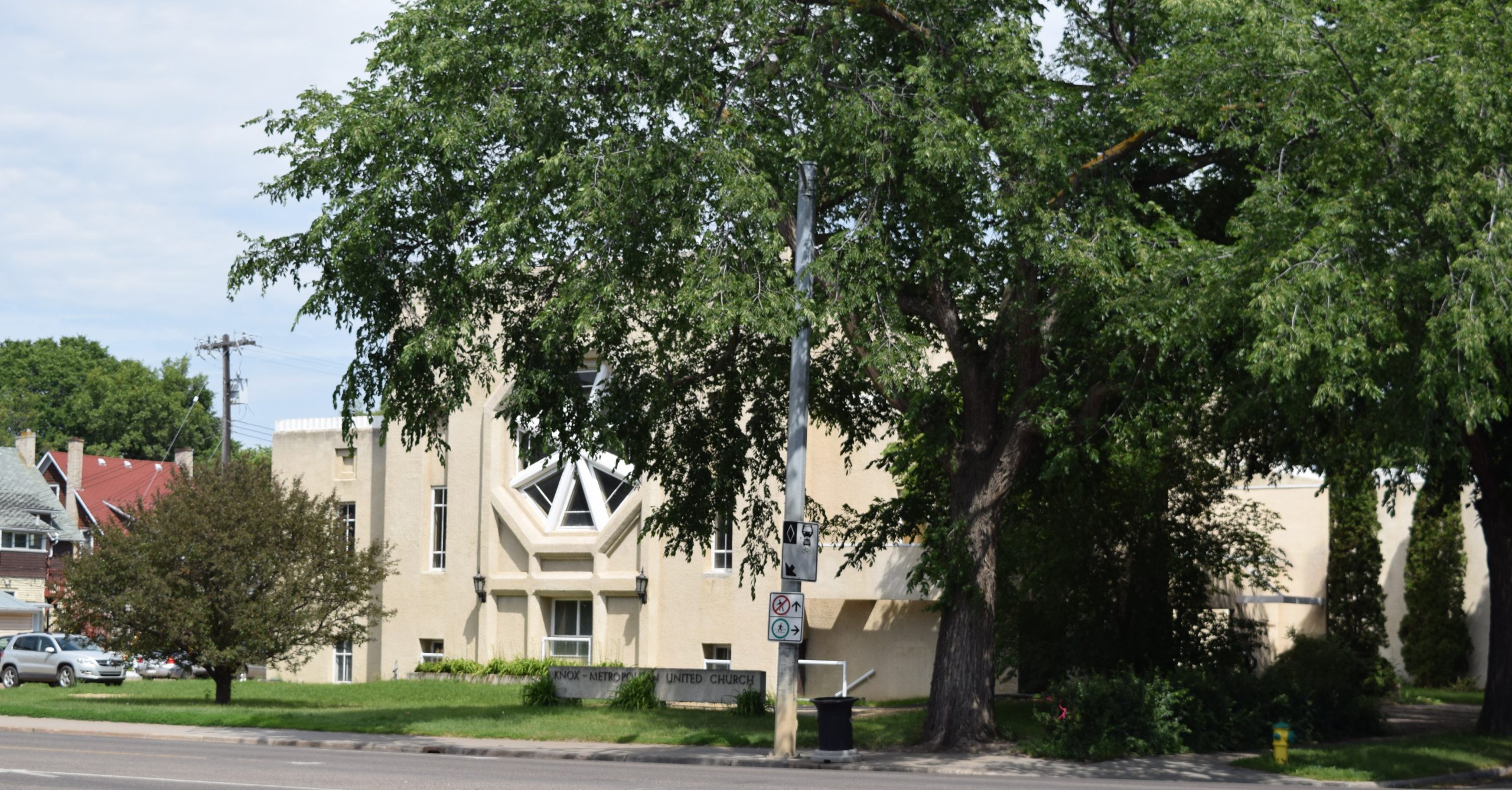
Knox-Met Manor was one of the recipients of a section of the stained glass window because of its close ties to the church. Of the more than 80 tenants living in Knox-Met Manor, many share Murland’s enthusiasm about receiving the window.
Joyce Dahl has been living at Knox-Met Manor since 2000 and was the building’s tenant representative to the church group. She explains that preserving the role that the church played in the development of the property and the connection between the church and the Manor is one to be celebrated. The church played a significant role not just in the history of the Garneau neighbourhood but in Edmonton as a whole.
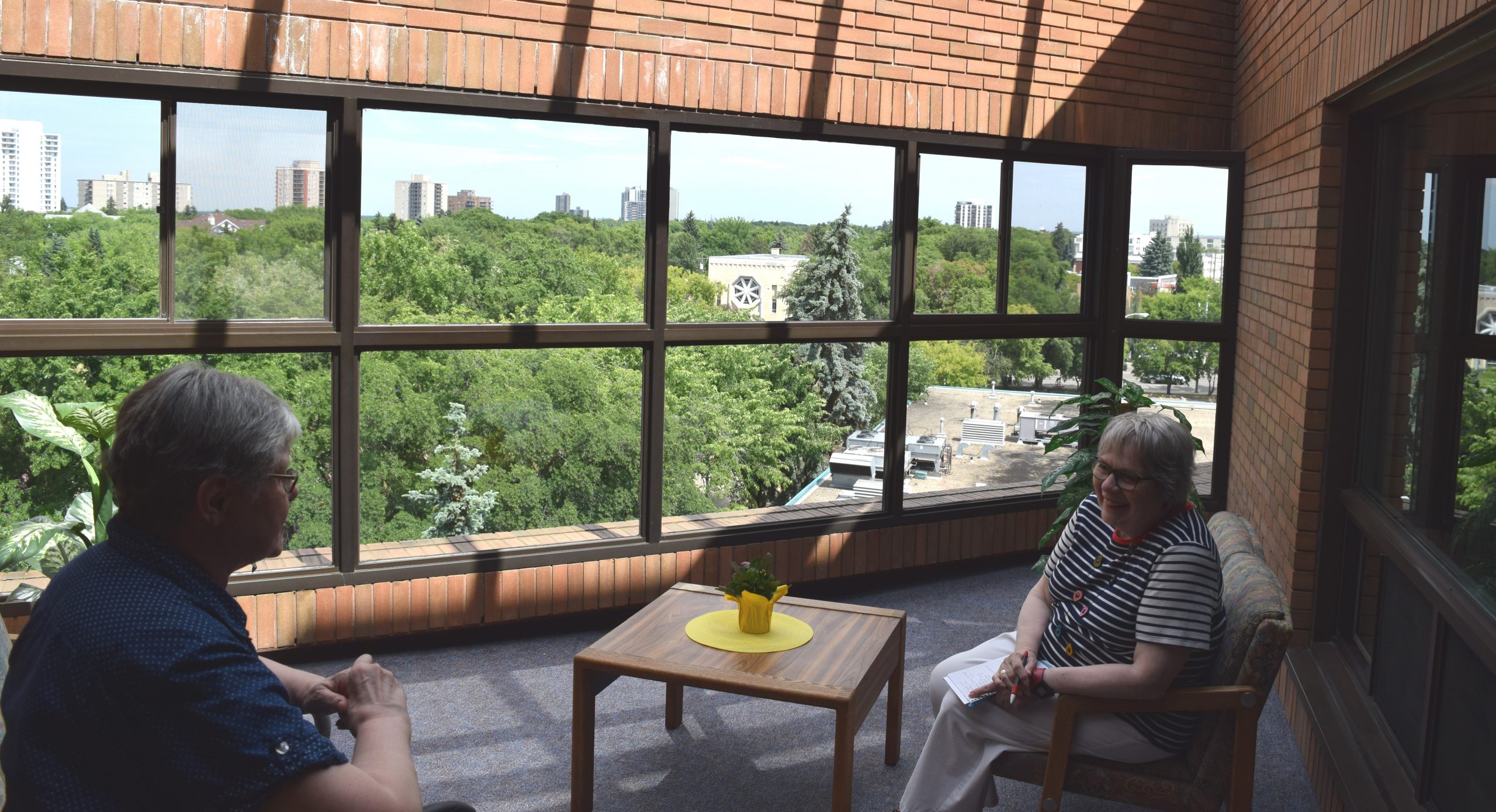
One piece of history is the role Knox Metropolitan United Church played in the Edmonton chapter of Amnesty International. Before she moved into Knox-Met Manor, Florence Miller was a member of Amnesty International and would take the bus from her north-side Edmonton home to the Garneau neighbourhood for meetings. She recollects the different events the Edmonton chapter of Amnesty International played in welcoming new communities to the city from all around the world and the work done to help ensure that these new groups knew they were welcome.
“Even now, there’s still a lot of diversity in [Knox-Met Manor],” Miller says. “We have neighbours from Egypt, Pakistan, South Korea, Papua New Guinea, all over. I want to make sure this piece the church’s stained glass window has a place in our building to commemorate the history of Edmonton being a welcoming city.”
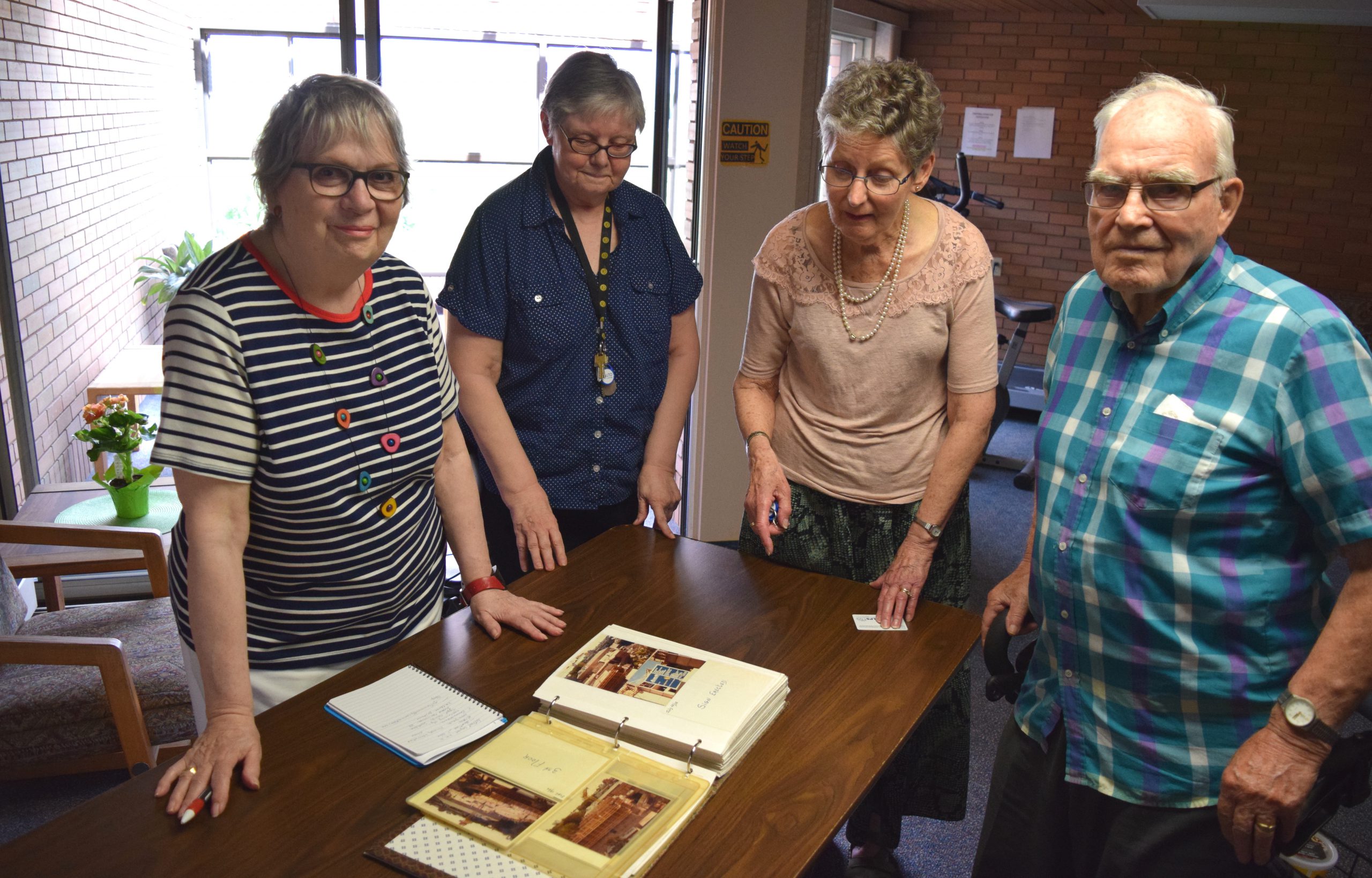
Gail Brown is part of a group of tenants at Knox-Met Manor who want to see the donated piece of stained glass find a permanent place displayed in the building. Though only living in Knox-Met Manor for the past two years and having no direct connection to the church, Brown still feels a responsibility to preserve this piece of the community’s history.
“I’m in very strong support of public art that shows the history of our city,” says Brown. “The church is empty now but it helped build this place that so many people call home. We have a piece of the architecture and it’s something amazing that needs to be respected, preserved and its history maintained.”
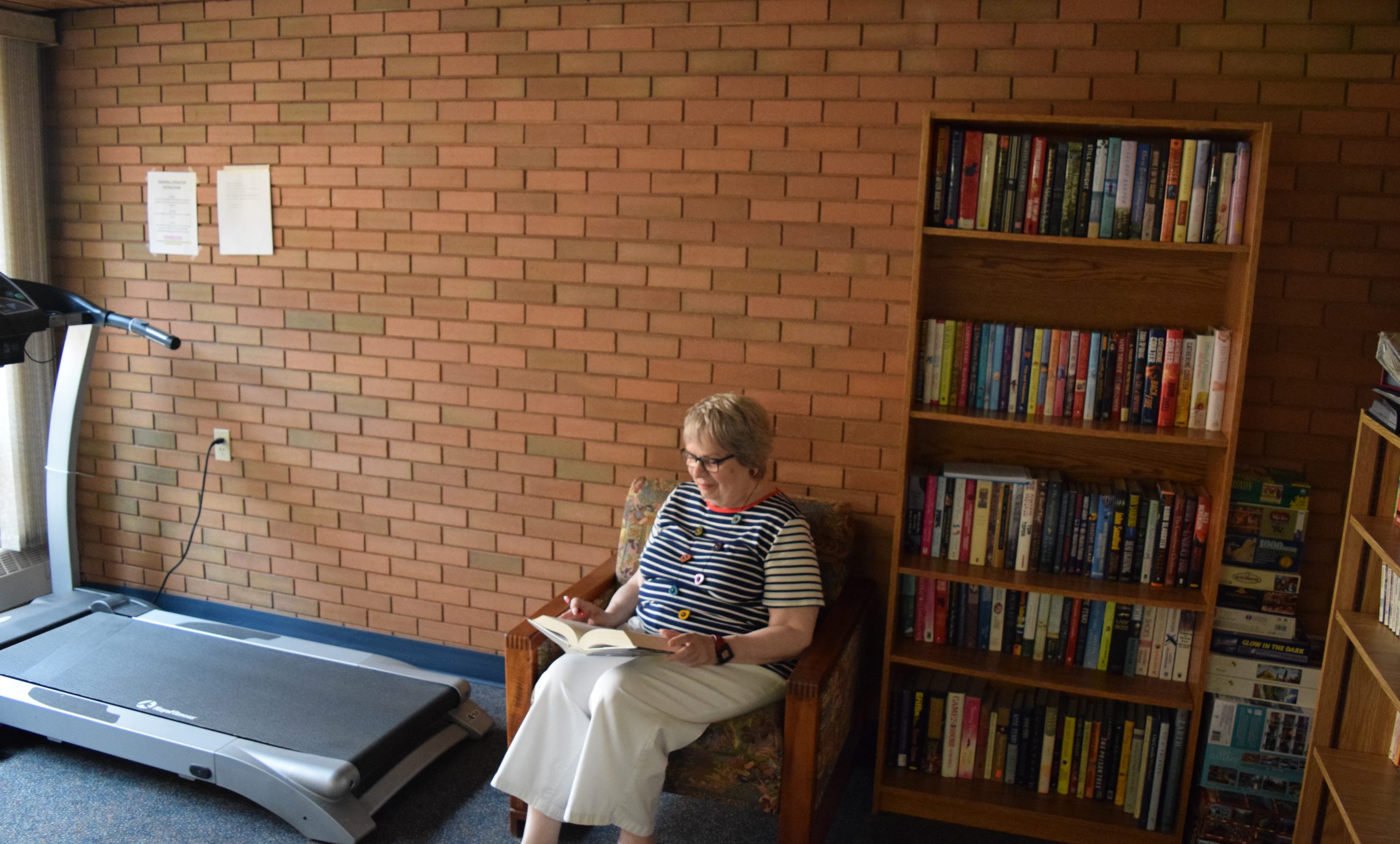
Lorna Etwell points out that the seventh floor of Knox-Met Manor is a perfect spot to mount the stained glass. It’s a shared space where tenants go to do their laundry, read a book, hop on an exercise bike, do a puzzle, or meet in the sunroom that overlooks the Garneau neighbourhood and right to the spot where the empty Knox Metropolitan United Church stands for the time being. She recalled that after some discussion it was determined that the brick wall next to the bookcase was the best location to proudly display the piece of community history.
“It’s an honour to have received this gift from the church,” says Etwell. “We want to do right by making sure it has a place where it can be appreciated.”
